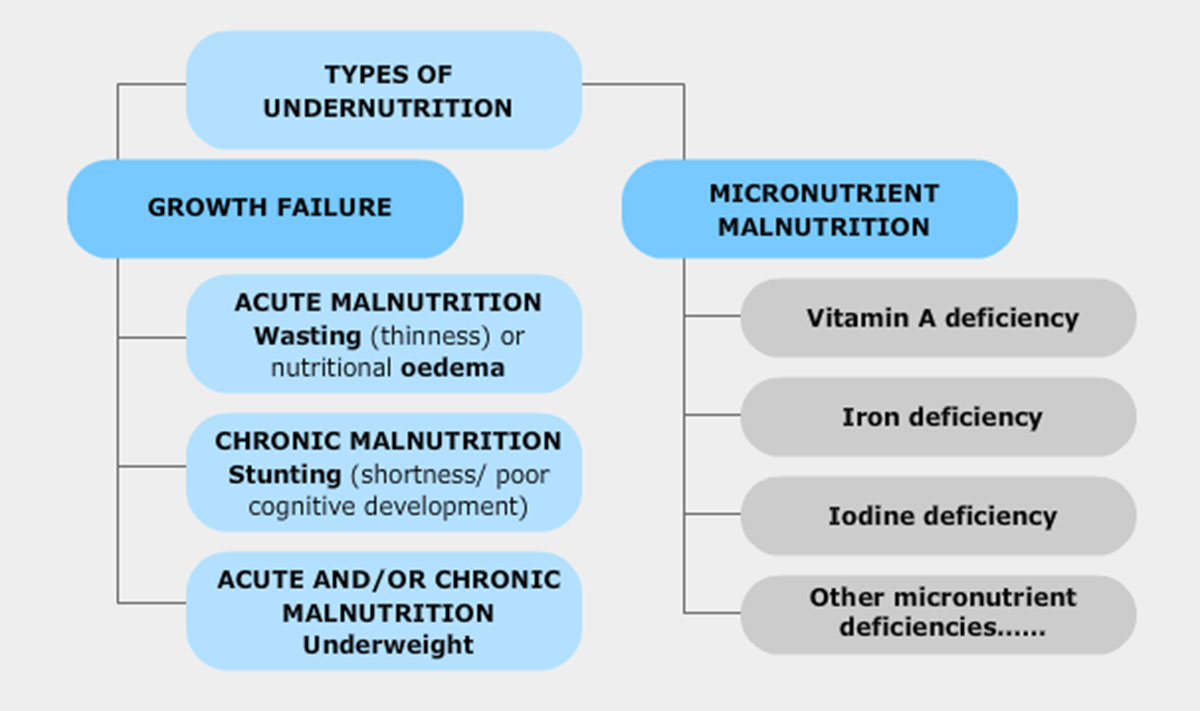Malnutrition is defined as the condition in which the body doesn’t obtain the proper amount of nutrients to sustain all of its body organs and functions at a healthy or sufficient level. It often arises from a poor diet or other conditions affecting the digestive system and synthesis of nutrients. Malnutrition does not necessarily mean the individual is underweight; obese and overweight individuals are also considered to be victims of malnutrition. In fact, 1.9 billion adults are overweight and obese and another 462 million are undernourished.
Undernourishment is further divided into four sub-categories: wasting, stunting, underweight, and deficiencies in vitamins and minerals. Wasting is defined as having a low-weight-for height. 57 million children under the age of 5 are wasted as they have a smaller weight in correspondence to how tall they actually are. Next we have stunting, in which the individual is unable to reach their maximum height potential for their age. It is not only their height and physical growth that is stunted; many body systems are also limited and stunted such as the immune system which leaves malnourished patients more susceptible to infection. 144 million children under the age of 5 are stunted, preventing them from achieving their maximum height potential and leaving them immunocompromised. We also have underweight, which is low-weight-for-age. Being underweight and wasting often go hand in hand (though not necessarily) as they are both directly related with low weight. Finally, we have micronutrient malnutrition, or improper intake in vitamins and minerals. Consumption of these nutrients are important as they help produce our body’s analysts and hormones needed for proper growth and development. Some of the most important minerals are iodine, vitamin A and iron and deficiencies in all three of them can contribute to devastating health effects particularly in children and pregnant women.
Malnutrition is a devastating ailment whose effects tend to stick with individuals for life, affecting their growth and development. Everyone throughout the world is susceptible to suffering from malnutrition, but it tends to be the lower income families who are unable to obtain enough mails and the necessary nutrition who suffer from it the most. While the World Health Organization has placed more of a focus on combatting malnutrition in the last few years, its effects are not dying away and still continue to plague people all around the world.

